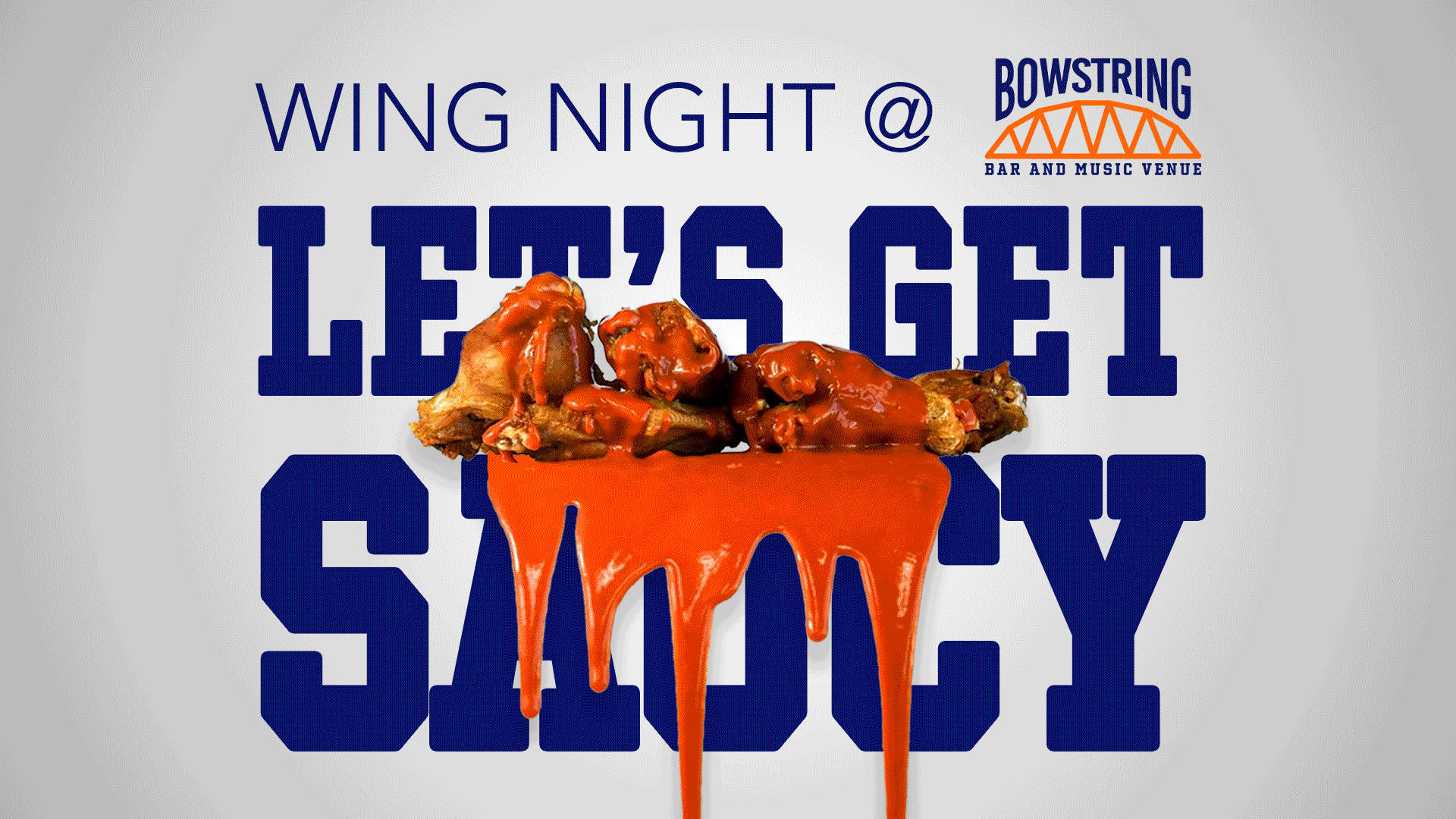Creative as Hell: Why the Toughest Brands Are the Most Creative
In a market flooded with sameness, what actually sets the toughest brands apart?
Not just endurance. Not just brand strategy. Creativity.
The toughest brands that thrive in times of chaos—economic uncertainty, shifting platforms, rising competition—aren’t the ones playing it safe. They’re the ones that dare to be weird, bold, unexpected. They create new value when everything feels like it’s falling apart.
The Economy’s Rough. Your Brand Doesn’t Have to Be.
Inflation is sticking. Consumers are pulling back. Marketers are seeing budgets slashed and expectations raised. Growth feels hard-won.
But here’s the wild part: some of the strongest brands in history were forged during economic collapse.
During the Great Depression, Kellogg’s didn’t pull back. Their competitor, Post, cut their marketing spend and froze. Kellogg’s did the opposite. They launched Rice Krispies, doubled their ad budget, and leaned into radio—an emerging channel at the time. That bold move catapulted them ahead. They didn’t just survive—they dominated.
In 2020, as COVID-19 hit and masks became scarce, Etsy turned a chaotic moment into community-powered innovation. Within weeks, they mobilized over 20,000 sellers to make cloth masks. Sales exploded, and Etsy earned a reputation as both helpful and nimble. That wasn’t luck. That was creative leadership in a crisis.
Even Nike—one of the biggest brands on the planet—built its edge by leaning into controversy and culture. Remember the Colin Kaepernick ad? Risky, but unforgettable. They bet on values, on storytelling, and on being bold. Creativity made Nike not just a shoe brand—but a movement.
Creativity Is the New Brand Toughness
Here’s how creativity gives brands the grit they need to thrive—even when the ground’s shaking.
1. Find What Everyone Else Is Missing—and Exploit It
Tough brands aren’t just tough. They’re perceptive.
They don’t follow the noise—they tune into what others ignore.
Whether it’s a cultural tension, a market gap, or a tiny unmet need, creativity helps you build real value in unexpected places.
Creative brands create value from what others miss.

2. Show, Don’t Just Say
Modern audiences can smell fake from a mile away. Brands that thrive don’t just preach—they prove. That takes creative execution, not just creative messaging.
Creative brands walk the walk—even under pressure.
3. Reframe What You Already Do
Sometimes, resilience means reinvention. But other times, it’s all about reframing your message so people see it in a radically new way.
Liquid Death didn’t invent water. They just put it in a tallboy, slapped on metal band aesthetics, and marketed it like it could fight demons. The result? An $800 million brand built on reframing something boring as something badass.
Creative brands make the familiar unforgettable.
Your Competitors Are Playing It Safe. That’s Your Advantage.
In a noisy market, brands that blend in disappear. Creativity gives you edges. Angles. Reasons for people to remember your name.
It’s not optional anymore. It’s how you survive.
It’s how you lead.
Creativity isn’t fluff. It’s your toughest asset.
So lean in. Say the weird thing. Try the bold format. Build the new idea.
Be creative as hell. Be #SurprisinglyDifferent.
Need help getting your brand to break through? Blue Ridge Creative Marketing specializes in creating surprisingly different work in web design, graphic design, branding, social media marketing, advertising, and more that breaks through the noise. Contact us today via email at hello@weareblueridge.com.
Top Healthcare Marketing Agency Red Flags: What to Watch for
Because you need more than pretty graphics—you need someone who speaks your language.
Choosing the right healthcare marketing agency for your clinic, recovery center, or wellness practice isn’t just about who has the glossiest website or the smoothest-talking sales rep. It’s about who understands your world—and shows up when it matters most.
At Blue Ridge Creative Marketing, we’ve heard the stories. Clients come to us frustrated, often after being burned by big-name agencies who overpromise, underdeliver, and have zero clue how your services actually work. They didn’t know what MAT meant. They confused detox with outpatient care. They posted content that violated HIPAA.
If you’re in the process of hiring a marketing partner—or ditching one—here are three marketing agency red flags to watch for, and how working with a smaller, more specialized team can make all the difference.
1. They Lock You Into a Contract… and Then Disappear
Some of the biggest names in marketing sell hard and vanish faster. Their reps hound you for weeks, pitch you a pre-built package, and promise the moon. But once you sign that 6- or 12-month contract? Poof. You’re just another ticket in their support queue, with little follow-up and even less flexibility.
Meanwhile, you’re stuck with outdated content, slow response times, and no real strategy to speak of.
What We Do Instead:
At Blue Ridge, we don’t trap you with contracts. We believe in earning your business month after month through real results and consistent communication. You’ll never have to chase us—we’re always just a call, text, or Zoom away. Want weekly updates? Monthly strategy sessions? You got it. We build our support around what you need.
2. The Healthcare Marketing Agency Doesn’t Know the First Thing About Healthcare
If your agency thinks “MAT” is a type of yoga class or doesn’t know the difference between PHP and IOP, you’ve got a problem. Generalist marketers may be great at selling shoes or smoothies—but healthcare? Especially recovery? That’s a different ballgame. It takes industry knowledge to create content that’s accurate, compassionate, and compliant.
Let’s be real: your marketing can’t afford to be tone-deaf or legally risky.
What We Do Instead:
We specialize in healthcare. That means we understand the medications you prescribe, the services you offer, and the pain points your patients face. We know how to speak directly to your audience—whether they’re looking for ketamine therapy, MAT, trauma-informed care, or hormone support. We also know HIPAA, and we’ll help you navigate it with confidence.
We’re not googling terms as we write—we’re bringing subject-matter knowledge to the table from day one.
3. You’re Just Another Line on a Spreadsheet
A big healthcare marketing agency can’t scale personalization. Once you’re in their system, your campaign gets handed off to junior staff or shoved into a generic content calendar. If you’re not their highest-paying client, your account likely sits idle unless you push for attention.
And when every month counts for building trust, reputation, and patient retention, that kind of neglect costs you.
What We Do Instead:
We’re intentionally lean and selective. We only work with a small number of healthcare clients so we can stay deeply involved in your success. Your brand gets the attention it deserves—from content strategy to performance analytics. We don’t just manage your account—we become part of your team.
The Bottom Line:
There’s too much at stake in healthcare marketing to hand it over to a healthcare marketing agency who doesn’t get it. You deserve a marketing partner who knows your industry, understands your audience, and actually cares about your success—not just your signature on a contract.
Whether you run a small outpatient clinic, a growing functional medicine practice, or a multi-location recovery center—we’re here to help you grow without losing your voice, your integrity, or your sanity.
Let’s build something real.
📧 hello@weareblueridge
📱 703-675-2092
LInkedIn
No pressure. No contracts. Just smart, strategic healthcare marketing that actually works.
3 Red Flags to Watch out for in Restaurant Marketing
Choosing the right restaurant marketing agency for your bar or restaurant isn’t just about who has the flashiest presentation or the most sales reps in the field. It’s about who will actually show up when it matters.
At Blue Ridge Creative Marketing, we’ve worked with restaurant owners who’ve been burned by big-name agencies that promised the world, locked them into contracts—and then disappeared.
If you’re considering hiring a marketing partner, here are three red flags to watch for, and how working with a smaller, more dedicated team can make all the difference:
1. They Lock You into a Contract… Then Disappear
Big agencies like SpotHopper are known for aggressive sales tactics. Their reps will wine and dine you (sometimes literally) to get you to sign a long-term contract. But once you’re locked in? The personal attention dries up. Months can go by without a check-in, and getting support feels like pulling teeth.
What We Do Instead:
At Blue Ridge Creative Marketing, we earn your business every month. No lengthy contracts, no disappearing acts. We’re proactive about communication and always just a text, call, or email away. You want weekly check-ins? We’ll make it happen. Prefer once a month? That’s cool too. You get to decide what support looks like.
2. They Don’t Really Get to Know Your Brand
Massive agencies often use templated strategies that don’t reflect your unique vibe, values, or local audience. They might plug your restaurant into their system—but they won’t sit down with your chef, talk to your servers, or taste the food that sets you apart.
What We Do Instead:
We go all in. That means traveling to meet you in person—even if it means a long drive or hopping on a flight. We believe your marketing should reflect you, not a cookie-cutter strategy pulled from a dashboard. When we say we care about your brand, we mean it—and we show it.
3. You’re Just Another Account on a Spreadsheet
With large agencies, you’re likely one of hundreds of clients. If your business isn’t bringing in the biggest dollars, you can quickly get deprioritized. It’s not personal—it’s just volume.
What We Do Instead:
We work with a select number of restaurant partners so we can actually prioritize your business. You’re not a line item—you’re a relationship. And we treat your brand as if it were our own, because we understand how much is riding on getting it right.

The Bottom Line:
When it comes to restaurant marketing, bigger doesn’t always mean better. If you’re tired of being sold to and then left on your own, it might be time to go with a team that’s lean, scrappy, and fully invested in your success.
Let’s build something great together. Reach out and let’s talk about how we can help your restaurant thrive—no contracts, no pressure, just real partnership. Email us at hello@weareblueridge or text or call today at 703-675-2092.
How to Find & Share User Generated Content to Boost Your Brand
These days, with the prevalence of social media, some of the best marketing for your business doesn’t come from your own campaigns — it comes from your customers in the form of user generated content!
User Generated Content (UGC) is authentic, relatable, and incredibly powerful when it comes to building trust and expanding your reach. But how do you actually find this goldmine of content, and once you have it, what’s the best way to share it? Let’s break it down.
How to Find User Generated Content
- Check reviews and testimonials – Platforms like Google Reviews, Yelp, TripAdvisor, and even product reviews on your website are full of authentic user feedback. With permission, these make excellent UGC for social proof!
- Use social listening tools – Tools like Hootsuite, Sprout Social, Brandwatch, or Later allow you to track mentions, hashtags, and keywords related to your brand — even if users don’t tag you directly.
- Monitor mentions – Keep an eye on your notifications and mentions across platforms like Instagram, Twitter (X), TikTok, and Facebook. Customers often tag brands directly when they’re happy (or even when they’re seeking support).
- Search hashtags – Many customers naturally tag brands in their posts or use popular hashtags. Start by searching for your brand name, product name, and any branded hashtags you’ve created (like #MyBrandStyle or #BrewLove). This is often the easiest place to uncover genuine customer content.
How to Share User Generated Content
- Ask for permission – Before reposting a customer’s content, always ask for permission — even if they’ve tagged your brand. A simple, friendly direct message or comment like “Love your photo! Can we share this on our page with credit?” keeps things professional and respectful.
- Give credit – Always tag the original creator and thank them when you share their content. This shows appreciation and encourages others to create and share as well.
- Make It Part of Your Content Plan – Create a regular slot for UGC on your social media calendar — like a weekly “Fan Friday” or “Customer Spotlight.” This sets clear expectations and invites more people to participate.
- Use UGC in Ads and Website Content – User-generated photos, testimonials, and reviews make excellent material for digital ads, email campaigns, and product pages — just make sure you’ve secured proper permission.
Final Thoughts
Finding and sharing user generated content isn’t just about filling your social feed — it’s about building community and trust around your brand. Customers want to be seen and heard, and when you showcase their stories, you strengthen your connection with them while inspiring others to join in. As an added bonus, this helps build trust with your customer base and creates greater opportunity for social media interaction and buzz for your brand.
Start searching, start sharing, and watch your community (and your brand) grow!
Branding in Healthcare: How to Create a Strong Healthcare Brand
As healthcare continues to evolve rapidly, establishing a strong healthcare brand has never been more important.
A well-developed brand not only helps differentiate your organization from competitors but also builds trust with patients and can contribute to better patient outcomes. In this article, we’ll explore why branding matters in healthcare and provide tips for creating a healthcare brand that stands out.
What is Branding in Healthcare?
Branding in healthcare refers to the deliberate process of creating a unique identity for a healthcare organization or service. This includes developing a name, logo, tagline, and visual identity that communicates your organization’s values, personality, and mission. A strong brand can build trust with patients, differentiate your organization from competitors, and even enhance overall patient outcomes.
Why is Branding Important in Healthcare?
The old saying “If you build it, they will come” no longer applies in today’s healthcare market. With more options available than ever before, patients are seeking providers they can trust – and branding plays a key role in this process.
1. A Competitive Marketplace
With the growing number of healthcare providers, patients have more choices than ever before. A strong brand can help your organization stand out, attract new patients, and retain existing ones by showcasing your unique values, quality of care, and patient-centered approach.
2. Building Trust
Trust is essential in healthcare. Patients must feel confident in their healthcare providers to receive safe, high-quality care. A well-established brand communicates professionalism, reliability, and expertise, fostering trust and improving patient satisfaction.
3. Connecting to Patients for Better Outcomes
A strong brand can build a deeper connection with patients. When patients feel a sense of familiarity and trust with your brand, they’re more likely to follow treatment plans, adhere to medication regimens, and engage in healthy behaviors. This emotional connection can lead to better health outcomes, making branding a key part of your organization’s success.
How to Create a Strong Healthcare Brand
Building a strong healthcare brand requires a thoughtful, strategic approach. Here are some key steps to get started:
1. Define Your Brand
Before creating a brand, you need to understand what your organization stands for. This includes defining your mission, values, personality, and voice. Answer the following questions to clarify your brand’s identity:
-
What is our company mission?
-
What values does our organization stand for?
-
What is our brand ‘personality’?
-
What is our brand ‘voice’?
Once you have clarity on these aspects, you can begin developing the visual elements of your brand, such as your logo, tagline, and design elements.
2. Develop a Strong Visual Identity
Your visual identity is the face of your brand and includes your logo, tagline, color palette, fonts, and overall design aesthetic. A strong visual identity makes your brand memorable and easily recognizable. Work with a designer to ensure your visual identity aligns with your values and sets you apart in a crowded marketplace.
3. Create a Consistent Brand Experience
Consistency is key. Patients should experience a uniform brand message and aesthetic, whether they’re interacting with your website, visiting your clinic, or engaging with your social media. Consistent visuals, messaging, and tone across all touchpoints create a cohesive, trustworthy experience.
4. Build Trust with Patients
In healthcare, trust is built on transparency and authenticity. Be open and honest with your patients about your services, staff, and care practices. Share patient success stories, highlight your team’s expertise, and emphasize your commitment to patient-centered care. This fosters a relationship that builds trust and loyalty.
5. Focus on the Patient Experience
The digital experience plays an important role in shaping how patients perceive your brand. From booking an appointment online to engaging with your social media content, every touchpoint contributes to their overall experience with your organization. While the treatments and procedures you provide are undeniably important, how patients feel during their interactions with your brand – especially online – can influence their perception of your care. A well-designed website, clear communication, and engaging content can enhance patient satisfaction and help build a strong connection that strengthens their trust in your organization.
6. Leverage Digital Marketing
In today’s digital age, marketing is an essential tool for healthcare branding. Social media, email marketing, and content marketing are powerful ways to engage with patients, build brand awareness, and drive patient acquisition. A well-executed digital strategy allows your brand to reach patients where they are – online – and helps solidify the connection between your brand and their healthcare journey.
Final Thoughts
As healthcare continues to evolve, building a strong brand that resonates with patients is crucial. By focusing on the entire patient experience – both in-person and digital – your organization can stand out in a competitive market, build trust, and improve patient outcomes. The digital experience is just as important as the treatments you provide, and it’s time to embrace it as a vital component of your healthcare brand.
At Blue Ridge Creative Marketing, we have unique healthcare experience many other creative agencies don’t have. This helps us build and grow beautiful healthcare brands that accomplish all of the above.
Reach out today, and lets see how we can make your healthcare brand shine!
Wix vs WordPress: Why WordPress is the Right Choice for Your Business
When it comes to building a website for your business, you’ve likely come across two major contenders: Wix vs WordPress.
While Wix offers an easy-to-use drag-and-drop website builder, WordPress is a more powerful and flexible content management system (CMS) that has stood the test of time. Here’s why when choosing between Wix vs Wordpress, the latter is the superior choice for anyone looking to build a professional, scalable website that will grow with their business.
1. Full Control Over Customization
One of the biggest advantages of WordPress is the level of control it offers over every aspect of your website. With thousands of themes and plugins available, you can customize your site’s design, functionality, and content to perfectly suit your needs. Whether you want to create a sleek e-commerce store, a stunning portfolio, or a blog with robust features, WordPress lets you do it all—without limitations.
Wix, on the other hand, can be restrictive when it comes to customization. While it’s great for simple websites, it doesn’t offer the same flexibility as WordPress when it comes to advanced features. You may find yourself running into limitations as your business grows and your needs become more complex.
2. Scalability
Wix vs Wordpress for scalability? As your business expands, so too will your website needs. WordPress is built to scale with your business, allowing you to easily add new features, pages, and functionality as you grow. Whether you need advanced SEO tools, multi-language support, or a custom-built plugin to automate processes, WordPress makes it easy to scale up without any technical headaches.
Wix, however, isn’t as adaptable when it comes to handling the growth of a business. If you want to make significant changes to your site as your business evolves, you may find yourself limited by the platform’s design and functionality constraints.
3. SEO Capabilities
Search Engine Optimization (SEO) is crucial to getting your business noticed online. WordPress is a powerhouse when it comes to SEO, offering plugins like Yoast SEO and RankMath that help you optimize every page, post, and product for search engines. These plugins guide you through optimizing your content for maximum visibility, giving you more control over your site’s performance on Google.
Wix offers basic SEO features, but it doesn’t compare to the level of control and advanced capabilities that WordPress offers. If you’re serious about ranking well on search engines and driving organic traffic to your site, WordPress is the way to go.
4. Ownership and Flexibility
When you use Wix, you’re essentially renting space on their platform. While Wix provides hosting and design tools, you don’t fully own your website or have the same level of control over its backend as you would with WordPress. If you ever want to migrate your site or switch platforms, it can be a tricky process.
WordPress, however, is open-source software, meaning you own your website and its content. You can choose any hosting provider, move your website at any time, and fully control every aspect of your site’s backend. This flexibility ensures that your website is entirely under your control, now and in the future.
5. Better for E-Commerce
Wix vs WordPress for selling services or products? If you plan to run an online store, WordPress is the clear winner. With powerful e-commerce plugins like WooCommerce, WordPress offers an extremely flexible and customizable platform for running a shop, with a wide variety of features for inventory management, payment processing, and shipping integration.
While Wix has an e-commerce solution, it’s not as robust or scalable as WordPress. As your business grows, you’ll likely encounter limitations with Wix’s e-commerce tools. With WordPress, you can easily expand your store with advanced features and integrations to meet the evolving needs of your customers.
6. Community Support and Resources
WordPress boasts one of the largest online communities of developers, designers, and content creators. This means you’ll have access to a wealth of resources, tutorials, and forums that can help you solve any issue you encounter. Whether you’re troubleshooting a technical problem or looking for guidance on how to optimize your website, the WordPress community has got you covered.
Wix offers customer support, but it’s not quite as extensive as the support network available for WordPress. With WordPress, you’re never alone—you can tap into an entire ecosystem of developers and resources to help you with any challenge.
7. Cost-Effectiveness in the Long Run
While Wix offers a free plan, it comes with limitations like ads and restricted storage, and you’ll need to upgrade to a paid plan to unlock more features. Over time, as your business grows, you may find yourself needing to upgrade to more expensive plans to access the features you need.
WordPress itself is free to use, and you only pay for hosting, themes, and any premium plugins you want to incorporate. This means that, in the long run, WordPress can be more cost-effective for businesses that are looking to grow and scale without constantly upgrading to higher-tier plans.
So, Wix vs WordPress? Which is better?
While Wix may be a good fit for personal projects or small websites, WordPress is the clear choice for businesses looking for flexibility, scalability, and complete control over their website. With its powerful features, robust SEO capabilities, and a massive community of support, WordPress offers the tools you need to create a website that can grow with your business.
At Blue Ridge, we recommend WordPress for its unmatched ability to adapt to your business’s needs. Whether you’re just starting out or looking to scale, WordPress gives you the flexibility and power to succeed online.
Hit Us Up for a Quote – We Want to Be Your Business’s Best Friend!
Ready to take your website to the next level? Let’s connect and see how we can help you grow. Whether you need a new site, a redesign, or ongoing support, we’ve got you covered. No strings attached—just good, solid business partnership.
Get in touch with us for a quote today: www.weareblueridge.com. We’re here to make things happen!Read more







